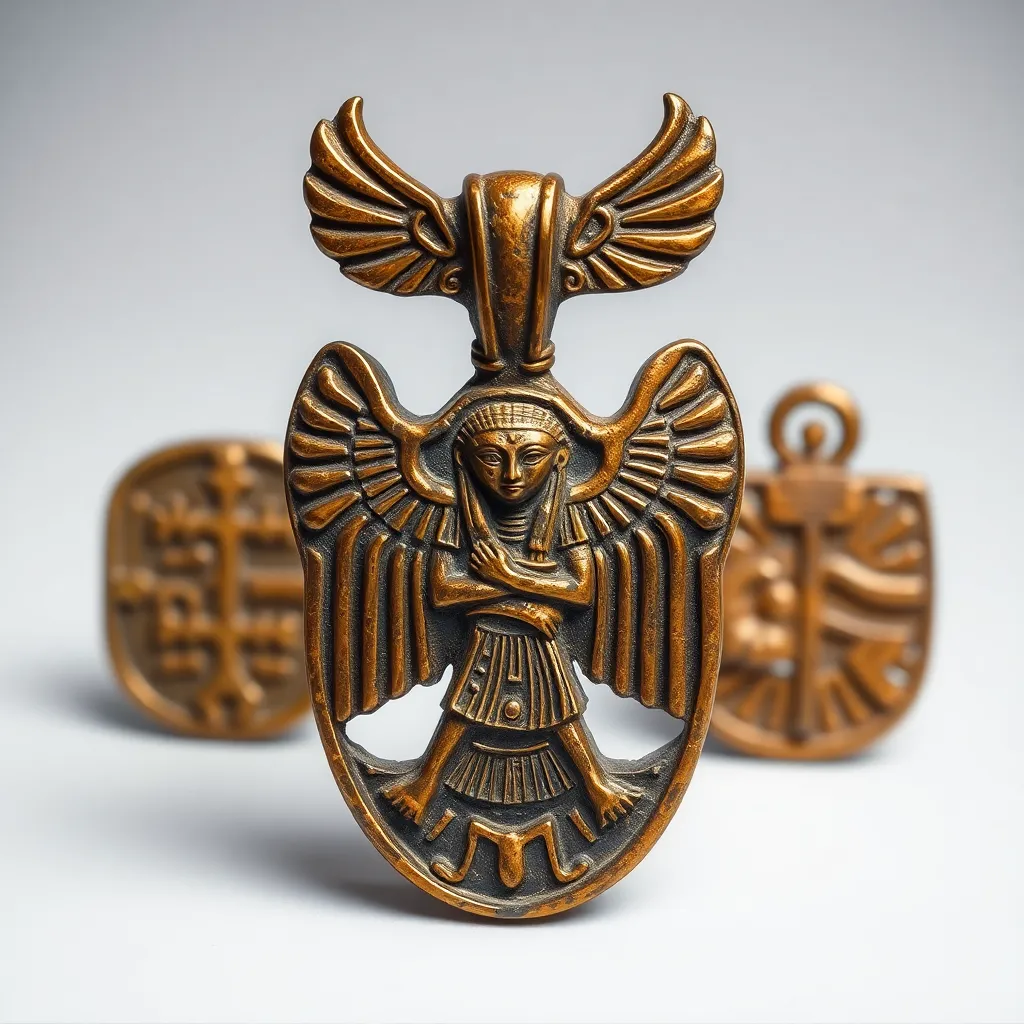Amulets for Protection Against the Unknown in Ancient Egypt
I. Introduction
Ancient Egypt was a civilization deeply intertwined with beliefs in the supernatural. The Egyptians viewed the world as a complex interplay of visible and invisible forces, where deities, spirits, and supernatural entities held significant influence over daily life. This belief system created a profound need for protection against unknown threats that could disrupt one’s existence, both in life and after death.
Amulets played a crucial role in addressing these fears, serving as powerful talismans intended to shield individuals from malevolent forces and ensure safety in the afterlife. This article explores the role of amulets in ancient Egyptian culture, focusing on their significance, types, creation processes, funerary practices, cultural exchanges, and their enduring legacy in modern spirituality.
II. The Significance of Amulets in Ancient Egyptian Culture
Amulets are defined as objects believed to possess protective powers, often inscribed with symbols or prayers. In ancient Egypt, the use of amulets dates back to the Early Dynastic Period (c. 3100-2686 BCE) and continued through the Greco-Roman era (c. 332 BCE – 395 CE). These small objects were ubiquitous in Egyptian society, reflecting a widespread belief in the need for spiritual protection.
Amulets held profound social and religious significance. They were not only personal items but also communal artifacts that reflected a society’s values, fears, and beliefs about the afterlife. Their use was often intertwined with religious practices, making them an integral part of everyday life.
III. Types of Amulets Used for Protection
In ancient Egypt, various materials and symbols were used in the creation of amulets, each chosen for its specific protective qualities.
- Common materials: Faience, stone, metal, and wood were frequently used in amulet crafting.
- Symbols: Common symbols included the Eye of Horus, scarab beetles, and ankh symbols, each representing different protective attributes.
Three specific amulets designed for protection against malevolent forces include:
- The Eye of Horus: Symbolizing protection, royal power, and good health, this iconic emblem was believed to ward off evil and ensure safety.
- Scarab Beetle Amulets: Representing rebirth and regeneration, scarabs were associated with the sun god Ra, believed to roll away misfortune and protect the wearer from harm.
- Ankh Symbols: The ankh, or key of life, symbolized eternal life and was often worn to protect the wearer from death and misfortune.
Additionally, inscriptions and prayers were commonly engraved on amulets to enhance their power. These texts often invoked gods or spirits, seeking their favor and protection for the wearer.
IV. The Process of Amulet Creation
The creation of amulets was a meticulous process that involved selecting appropriate materials and employing specific crafting techniques. Artisans would often carve, mold, or engrave amulets, paying close attention to detail to ensure the finished product’s efficacy.
Rituals played a critical role in the amulet’s consecration and empowerment. These rituals could involve offerings, prayers, and the invocation of divine powers to imbue the amulet with protective qualities. Priests and skilled artisans collaborated in this process, with priests often overseeing the spiritual aspects while artisans focused on the physical creation.
V. Amulets in Funerary Practices
Amulets held significant importance in funerary practices, as they were often placed in tombs to protect the deceased in the afterlife. The belief was that the journey to the afterlife was fraught with dangers, and amulets served as guardians against malevolent spirits and misfortune.
Examples of amulets found in ancient Egyptian graves include:
- The Heart Scarab: Placed over the heart of the deceased to ensure a favorable judgment in the afterlife.
- Isis and Nephthys Amulets: Often used for protection and guidance during the transition from life to death.
- Various protective symbols: Including the Eye of Horus and ankh symbols, which were included in burial goods to provide safety and reassurance.
These protective functions of amulets were believed to assist the deceased in overcoming challenges and achieving eternal peace.
VI. The Cultural Exchange of Amulets
Ancient Egypt’s interactions with neighboring cultures influenced their amulet practices significantly. As trade routes expanded and civilizations interacted, ideas and symbols were exchanged, leading to the adaptation and appropriation of amulet designs.
- Influence of neighboring cultures: Cultures such as the Nubians, Greeks, and Romans contributed to the evolution of amulet designs and their meanings.
- Trade and interaction: The exchange of goods and ideas facilitated the integration of foreign symbols, enriching the amulet tradition.
This cultural exchange illustrates the dynamic nature of ancient Egyptian spirituality, revealing how beliefs were not static but evolved through contact with other civilizations.
VII. Modern Interpretations and Legacy of Ancient Egyptian Amulets
In contemporary spirituality, there has been a revival of interest in ancient amulets. Many people seek the protective qualities associated with these artifacts, often incorporating them into modern jewelry and spiritual practices.
Modern interpretations of ancient Egyptian amulets include:
- Jewelry pieces featuring symbols like the Eye of Horus and the ankh, which are believed to provide protection and good fortune.
- Spiritual practices that involve the use of amulets as tools for meditation and connection with ancient wisdom.
The continued fascination with ancient Egyptian culture and its beliefs speaks to the timeless nature of these practices, as they resonate with contemporary audiences seeking meaning and protection in their lives.
VIII. Conclusion
In summary, amulets played an essential role in ancient Egyptian beliefs about protection against the unknown. They served as vital tools for safeguarding individuals from malevolent forces and ensuring safety in the afterlife. The enduring legacy of these ancient practices continues to inspire modern spirituality and cultural expressions.
Understanding the significance of amulets in ancient Egyptian culture offers valuable insights into how people in the past navigated their spiritual landscapes. As contemporary society grapples with its fears and uncertainties, the wisdom of ancient practices remains relevant, inviting reflection and exploration of the protective powers that these amulets once embodied.




